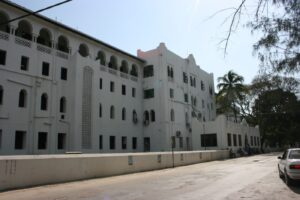Dar es Salaam. Tanzania’s ranking in the number of dollar millionaires has fallen to number 10 from seventh in 2022, according to a report by research firm New World Wealth and Henley & Partners report released on Tuesday March 2023.
With a growth of 20 percent in the past 10 years (2012-22) the latest 2023 Africa Wealth Report published by Henley & Partners alongside New World Wealth shows Tanzania has 2,400 individuals with a net worth of over $1 million (Sh2.3 billion) and above.
The report also shows that the number of billionaires stagnated with six individuals in the Centi-millionaires category with over $100 million
Most of the dollar millionaires (1,300) reside in the commercial capital Dar es Salaam a city that was ranked 12th richest in 2022, with total private citizens wealth of $24 billion (Sh55 trillion).
However, observers were quick to note that the population of Tanzania’s dollar millionaires in the study is significantly higher than estimates in other reports, indicating the difficulty of tracking the wealthy in Africa.
In the report, Tanzania is the only East African country with a dollar billionaire after it failed to identify such individuals in Kenya, Uganda and other EAC countries.
The report reveals that Africa’s “Big Five” private wealth markets — South Africa, Egypt, Nigeria, Kenya, and Morocco — together account for 56 per cent of the continent’s high-net-worth individuals (HNWIs) and over 90 per cent of its billionaires.
There are currently 138,000 HNWIs with a private wealth of $1 million or more living in Africa, along with 328 centi-millionaires worth $100 million or more, and 23 US-dollar billionaires.
The report shows that only six countries in Africa have dollar billionaires with Egypt having 8, South Africa having 5, Nigeria and Morocco having 4 each, and Algeria and Tanzania both having a single-dollar billionaire.
Despite the stagnation in Tanzania’s dollar millionaires compared to last year, Tanzania has recorded a 20 per cent increase in the number of its dollar millionaires since 2012 even as other countries have been recording sharp drops.
For instance, South Africa’s dollar millionaires have reduced by 21 per cent from 2012, those in Egypt have shrunk by 25 per cent, Nigeria’s have dropped by 30 per cent and Algeria’s dollar millionaires have reduced by 26 per cent during the same period.
Millionaires’ migration
The report indicates that the number of tycoons in African countries varies annually depending not only on the local and global economic conditions but also due to the migration of the super-rich to other countries.
It shows about 18,500 HNWIs have left Africa over the past decade in search of greener pastures elsewhere outside the continent.
About 1,200 HNWIs have moved between African countries over the past 10 years, with most relocating to Mauritius and South Africa.
“Most have relocated to the UK, the USA, and the UAE. Significant numbers have also moved to Australia, Canada, France, Israel, Monaco, New Zealand, Portugal, and Switzerland,” said the report.
To underline this movement, the report shows that, while some 50 dollar billionaires were born in Africa, just 23 of them still live on the continent, raising concerns that the tycoons are exporting business away from their home countries.
“Billionaires rarely move for tax reasons. They usually relocate to expand their businesses or due to safety concerns,” it says.
Africa is home to some of the world’s fastest-growing markets, including Rwanda, Mauritius, and Seychelles, which have seen wealth growth of 72 per cent, 69 per cent, and 54 per cent respectively over the past decade.
The report projects Mauritius to experience the highest private wealth growth rate at 75 per cent over the next decade, making it the fourth fastest-growing country globally in millionaire growth percentage terms after Vietnam, India, and New Zealand.















